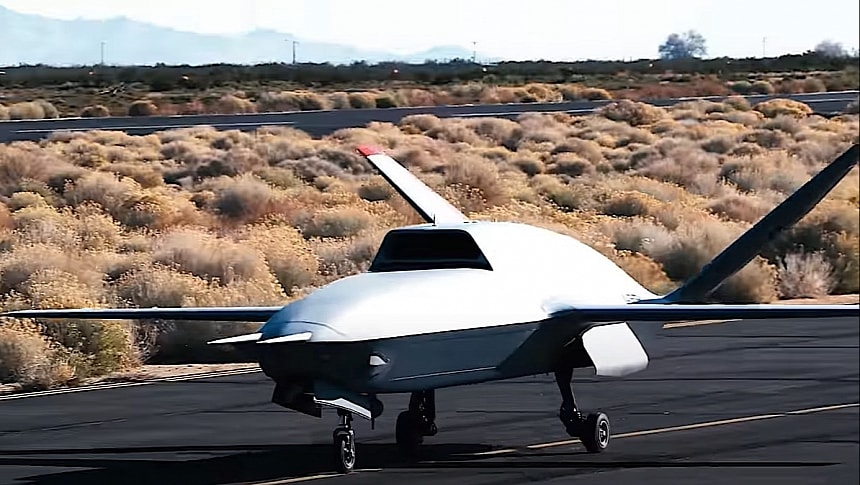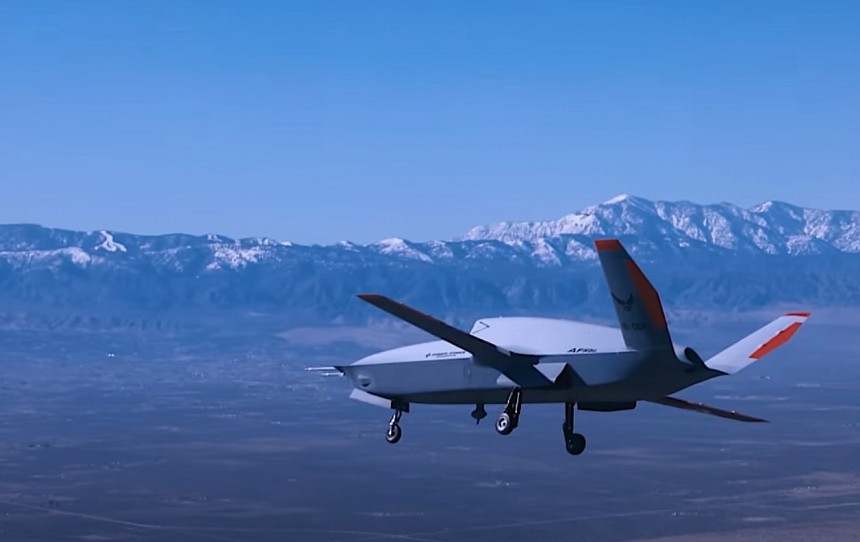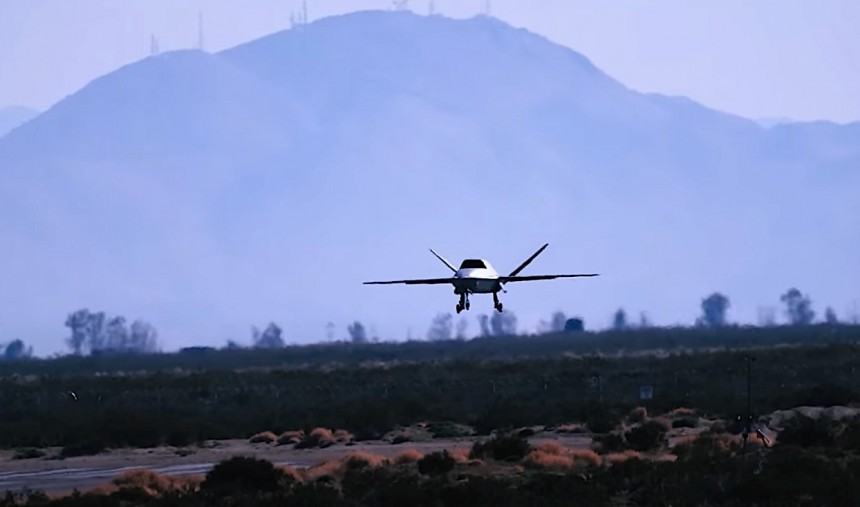Whenever one sets out to make a new aircraft, a lot of research and development (but also money), are needed. Most of the time these efforts pay off, but what you're left with at the end of all the work is a singular platform that rarely can give birth to any new aerial vehicle derived from it. But what if, somehow, the methods of the automotive industry can be applied to aircraft making?
As you're very much aware, carmakers invest time, money, and effort into developing new platforms for their vehicles. But once they do that, they can share the platform across brands and models, meaning that a single platform can underpin a variety of vehicles playing in different segments and serving different needs.
That's not what’s happening in aviation, but it could soon do, if the U.S. Air Force (USAF) Research Laboratory (AFRL) has its way.
We all know how the American military is well into drones right now. From surveillance tools to strike platforms, these things are being intensely researched so that they may one day change the face of warfare.
One type of drone America is currently seriously looking into is called the Collaborative Combat Aircraft (CCA), a family that also includes the X-62 Vista and F-16 Venom projects.
In a nutshell we're talking about drones that can fly in support of crewed aircraft during missions, providing pilots not only with an extra set of eyes, but also strike capabilities from well outside the danger zone.
Several programs are currently ongoing in this field (others are calling this kind of drones loyal wingmen), but what brings us here today is the one that has to do with the XQ-67A OBSS demonstrator.
We've talked about the XQ-67A before. In case you missed that, I'll remind you the drone is a General Atomics derivation of the XQ-58A Valkyrie produced by defense contractor Kratos.
The Valkyrie had its first flight back in 2022, and it is expected to soon fly in support of F-35 and F-22 fighter jets. It should also form the backbone of what the Air Force expects to be a genus of drones – various uncrewed aircraft designed for different purposes but built on the same chassis.
The XQ-67A took to the sky for the first time back in February, soaring to the sky over the General Atomics Gray Butte Flight Operations facility outside Palmdale, California as the first of its kind to do so.
Back then, the AFRL and the other parties involved only informed us of the achievement, but now, four months after the fact, here comes the first video of the drone in action (video available below this text).
The drone in this configuration is described as an Off-Board Sensing Station (OBSS), meaning it will act as an extension of the fighter jets' and bombers’ own sensors. In essence, it should fly ahead of the main strike force and send back data on targets and threats, making the pilots' life a lot easier.
The drone is technically remotely piloted, but it can fly in autonomous mode as well. The exact specifications of the aircraft are not known, but we do know a bit about what the drone it is based on, the Valkyrie, is capable of.
In that configuration, the aircraft can reach speeds of 652 mph (1,050 kph) and can fly for as much as 2,449 miles (3,941 km) miles. Aside from sensors and cameras, it can be equipped with an assortment of weapons, including Joint Direct Attack Munition (JDAM) and small-diameter bombs.
The test flight that took place at the beginning of the year is meant to be the first in a series that will validate the design and build of the XQ-67A. It also proves, as per AFRL, that the genus approach works, so we're likely to see more and more variations of the Valkyrie take to the sky in the near future.
If the approach proves itself worthy, the Air Force expects to have a way at its disposal for "faster and more cost-effective replication of the aircraft, […] speeding delivery of affordable, advanced capabilities to the warfighter." It took the parties involved two years to design, build, ground test, and fly the XQ-67A, but that timeframe should shrink for upcoming aircraft.
The faster development and the use of common platforms and systems should also make the drones a lot cheaper than what's currently available. The end products would in turn be more prepared to adopt new technologies as they emerge.
At the time of writing, neither the Air Force nor the makers of the XQ-67A said anything about when the drone would be ready to serve. Despite looking pretty advanced, the program is likely still years away from delivering something that can actively and efficiently be used on the battlefield.
That's not what’s happening in aviation, but it could soon do, if the U.S. Air Force (USAF) Research Laboratory (AFRL) has its way.
We all know how the American military is well into drones right now. From surveillance tools to strike platforms, these things are being intensely researched so that they may one day change the face of warfare.
One type of drone America is currently seriously looking into is called the Collaborative Combat Aircraft (CCA), a family that also includes the X-62 Vista and F-16 Venom projects.
In a nutshell we're talking about drones that can fly in support of crewed aircraft during missions, providing pilots not only with an extra set of eyes, but also strike capabilities from well outside the danger zone.
We've talked about the XQ-67A before. In case you missed that, I'll remind you the drone is a General Atomics derivation of the XQ-58A Valkyrie produced by defense contractor Kratos.
The Valkyrie had its first flight back in 2022, and it is expected to soon fly in support of F-35 and F-22 fighter jets. It should also form the backbone of what the Air Force expects to be a genus of drones – various uncrewed aircraft designed for different purposes but built on the same chassis.
The XQ-67A took to the sky for the first time back in February, soaring to the sky over the General Atomics Gray Butte Flight Operations facility outside Palmdale, California as the first of its kind to do so.
Back then, the AFRL and the other parties involved only informed us of the achievement, but now, four months after the fact, here comes the first video of the drone in action (video available below this text).
The drone in this configuration is described as an Off-Board Sensing Station (OBSS), meaning it will act as an extension of the fighter jets' and bombers’ own sensors. In essence, it should fly ahead of the main strike force and send back data on targets and threats, making the pilots' life a lot easier.
In that configuration, the aircraft can reach speeds of 652 mph (1,050 kph) and can fly for as much as 2,449 miles (3,941 km) miles. Aside from sensors and cameras, it can be equipped with an assortment of weapons, including Joint Direct Attack Munition (JDAM) and small-diameter bombs.
The test flight that took place at the beginning of the year is meant to be the first in a series that will validate the design and build of the XQ-67A. It also proves, as per AFRL, that the genus approach works, so we're likely to see more and more variations of the Valkyrie take to the sky in the near future.
If the approach proves itself worthy, the Air Force expects to have a way at its disposal for "faster and more cost-effective replication of the aircraft, […] speeding delivery of affordable, advanced capabilities to the warfighter." It took the parties involved two years to design, build, ground test, and fly the XQ-67A, but that timeframe should shrink for upcoming aircraft.
The faster development and the use of common platforms and systems should also make the drones a lot cheaper than what's currently available. The end products would in turn be more prepared to adopt new technologies as they emerge.
At the time of writing, neither the Air Force nor the makers of the XQ-67A said anything about when the drone would be ready to serve. Despite looking pretty advanced, the program is likely still years away from delivering something that can actively and efficiently be used on the battlefield.















